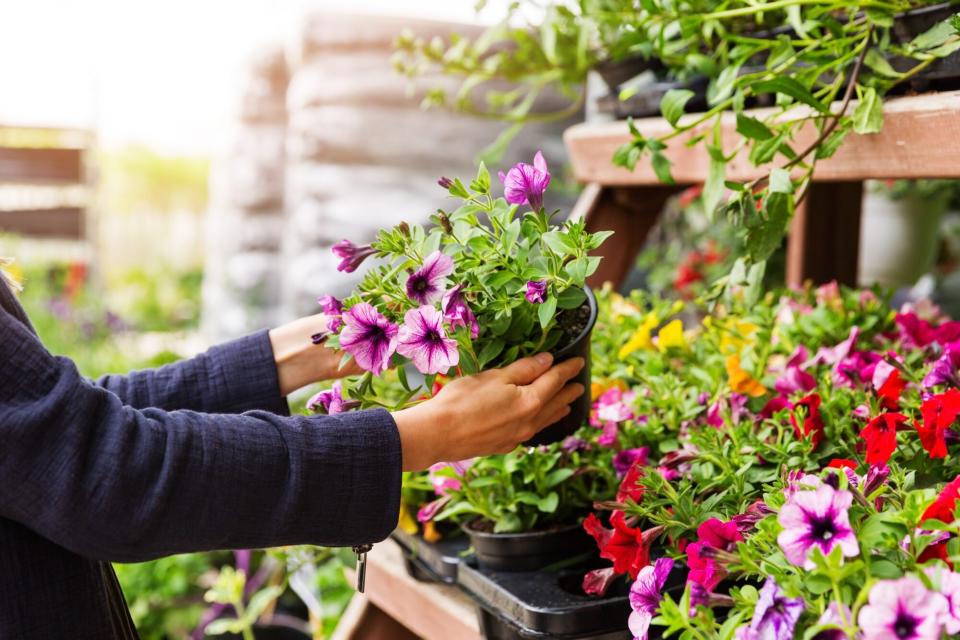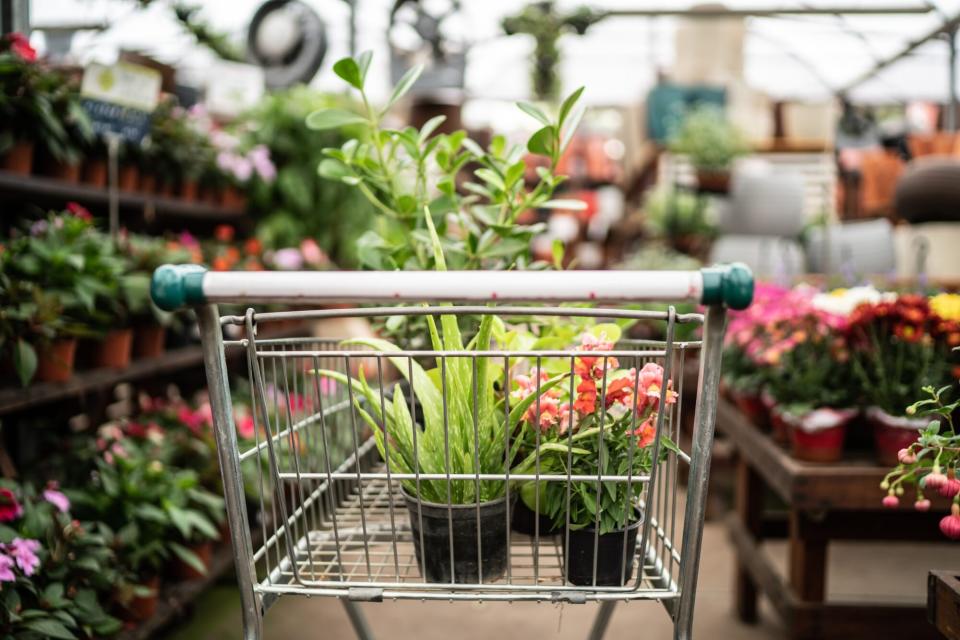How to Choose the Healthiest Plants From Your Garden Center
There's a handful of things you can do to ensure your plants are healthy, from meeting their watering requirements to deadheading spent blooms. But starting a successful garden begins at your local plant center. While nursery plants may seem healthy and lush on the surface, there can be some underlying issues when you look a little deeper. When shopping, inspect for insects, weak roots, weeds, and other indicators of an unhealthy plant. You'll want to choose the strongest, healthiest plants of the bunch to ensure they prosper when added to your garden.
Related: 26 Great Ideas for Your Garden That Will Completely Transform Your Landscape
Research Local Plant Nurseries
Before choosing where you purchase your plants, consider doing some preliminary research. "Looking at online reviews can be a helpful tactic for understanding other consumers' experiences, but some local nurseries may not have a robust online presence," says James Rockwell, greenhouse and nursery manager at Mt. Cuba Center. "Visiting a local nursery or independent garden center and making your own evaluation might prove more helpful."
While perusing nearby garden centers, check to see if the plants are labeled correctly and look well-cared for. If you see a lot of unhealthy foliage or disorganization, you may want to try somewhere else. Additionally, check with friends, family members, and other plant enthusiasts to see where they shop. Their first-hand experiences may be more reliable than online reviews.
Check for Healthy Foliage
One of the most obvious indicators of a plant's health is the foliage. "The leaves should appear robust and exhibit the correct color for the species," says Rockwell. "A healthy plant will have both older foliage and young, new foliage forming—new growth should appear healthy and vigorous." Any discoloration or mottling of the leaves may indicate a nutrient deficiency or disease, while excessive yellowing can be a sign the plant is stressed. Make sure to view the foliage from all angles to see if you spot any indicators of disease or stress before purchasing.

ronstik / GETTY IMAGES
Inspect the Stem
The stem will also clue you into how strong a plant's health is. "Make sure they are straight, well branched, and compact," says Rockwell. "Stems should be strong enough to support the plant and should not appear stretched." An unhealthy stem may have wounds or soft spots. Avoid woody plants that have splits or wounds on the stems, as those imperfections can be an entry point for disease.
Check for Fullness
While the fullness or thinness of a plant can be species dependent, it is sometimes an indicator of health. Prior to shopping, research the typical form of the plant to be sure. "Fullness can be an especially important marker of health for a woody plant," says Rockwell. "If a mature, well branched woody plant has very thin foliage during the growing season, that can be a sign of stress that has already taken place." If this is the case, you should avoid buying thin woody plants as they may continue to decline after purchase.
Related: How to Make a Flower Bed for Planting Beautiful Perennials, Annuals, and Beyond

Getty Images
Inspect for Bugs
Checking garden center plants for bugs is crucial, as insects can easily spread from plant to plant. "Look for clusters of bugs—some bugs like to hide in the crown of the plant, especially cottony scale and mealy bugs," says Adrienne Roethling, garden director for Paul J. Ciener Botanical Garden.
If you can't physically see any insects, check for signs of disease, which are commonly caused by pests. "Look for stunting, leaf mottling, webbing, sticky leaves, or sooty mold, as these can all be signs of pest or disease issues," says Rockwell. "If you are purchasing a houseplant, it can be helpful to quarantine the plant away from any houseplants you already own for a couple weeks to ensure that you don't transfer any pests that you may have missed."
Check the Roots
The roots are where the plant will take up water and nutrients, so it's important they are in good condition. To check the roots, gently take the plant out of the pot and look for white roots that are consistent throughout the soil and reach the bottom and sides of the pot. "The soil surrounding the roots should be evenly moist unless the plant prefers dry conditions," says Rockwell. "Dark, hollow, or mushy roots are a sign of decay." If you only see a few roots (or none at all) the plant is not ready for your garden and should be grown for additional time.
Check the Root Ball
Checking the root ball on tree species is especially critical as damage to the roots can be difficult to correct. "There should be a root flare at the base of the stem," says Rockwell. "If this is not present, the tree may have been potted too deep." Additionally, check for any circling roots, which can girdle and kill the plant if they are not pruned before planting. Trees with a lot of thick, circling roots should not be purchased.
Avoid Weeds
Although weeds are a common gardening woe, it's best to avoid buying nursery plants that already have them. "Weeds will rob plants of nutrients and could compete with the roots," says Roethling. It's especially important to avoid plants with exploding weeds. "If they are exploding, that may mean that have already seeded into the pots," says Roethling.

